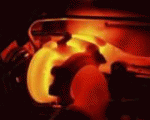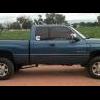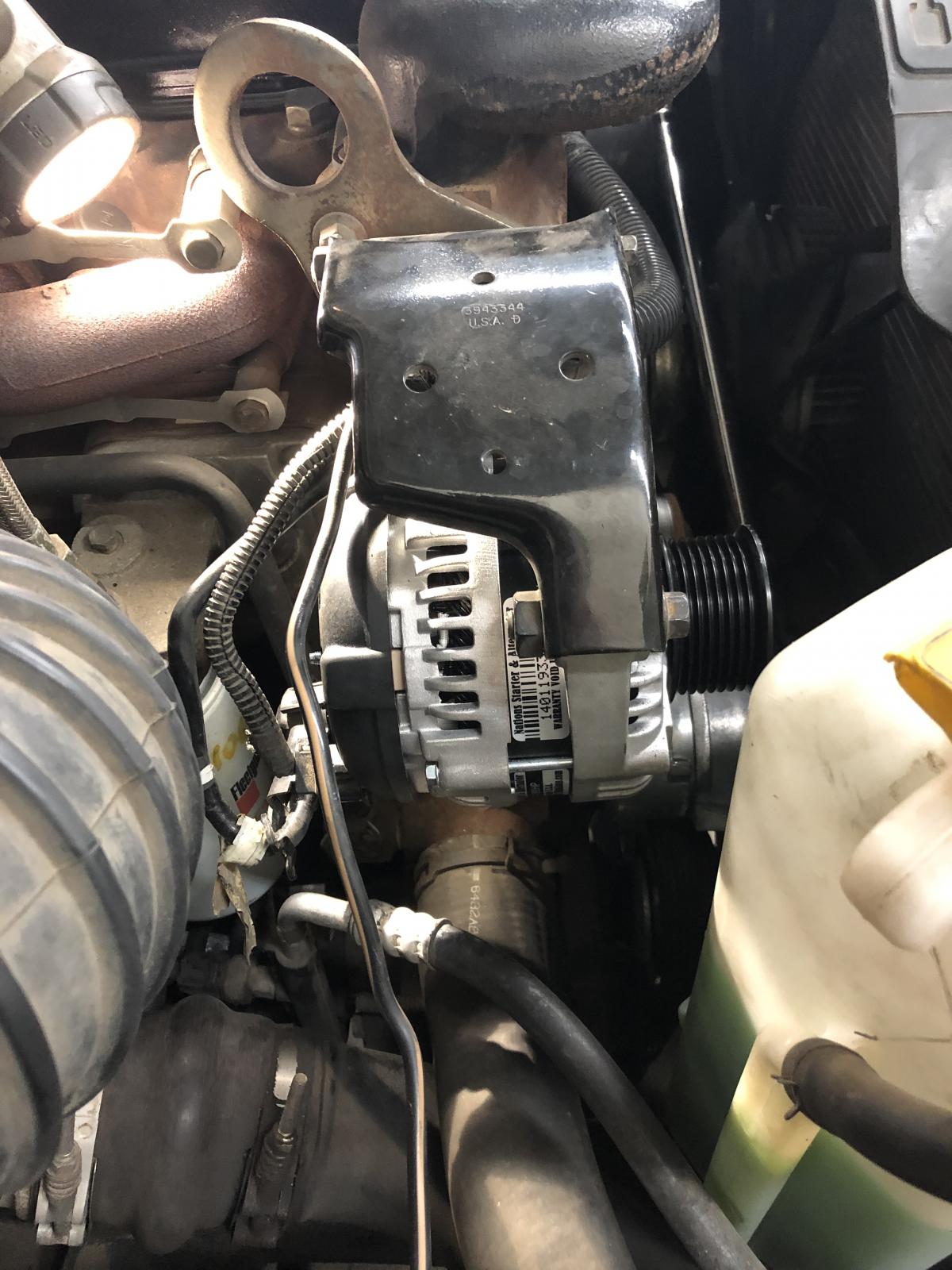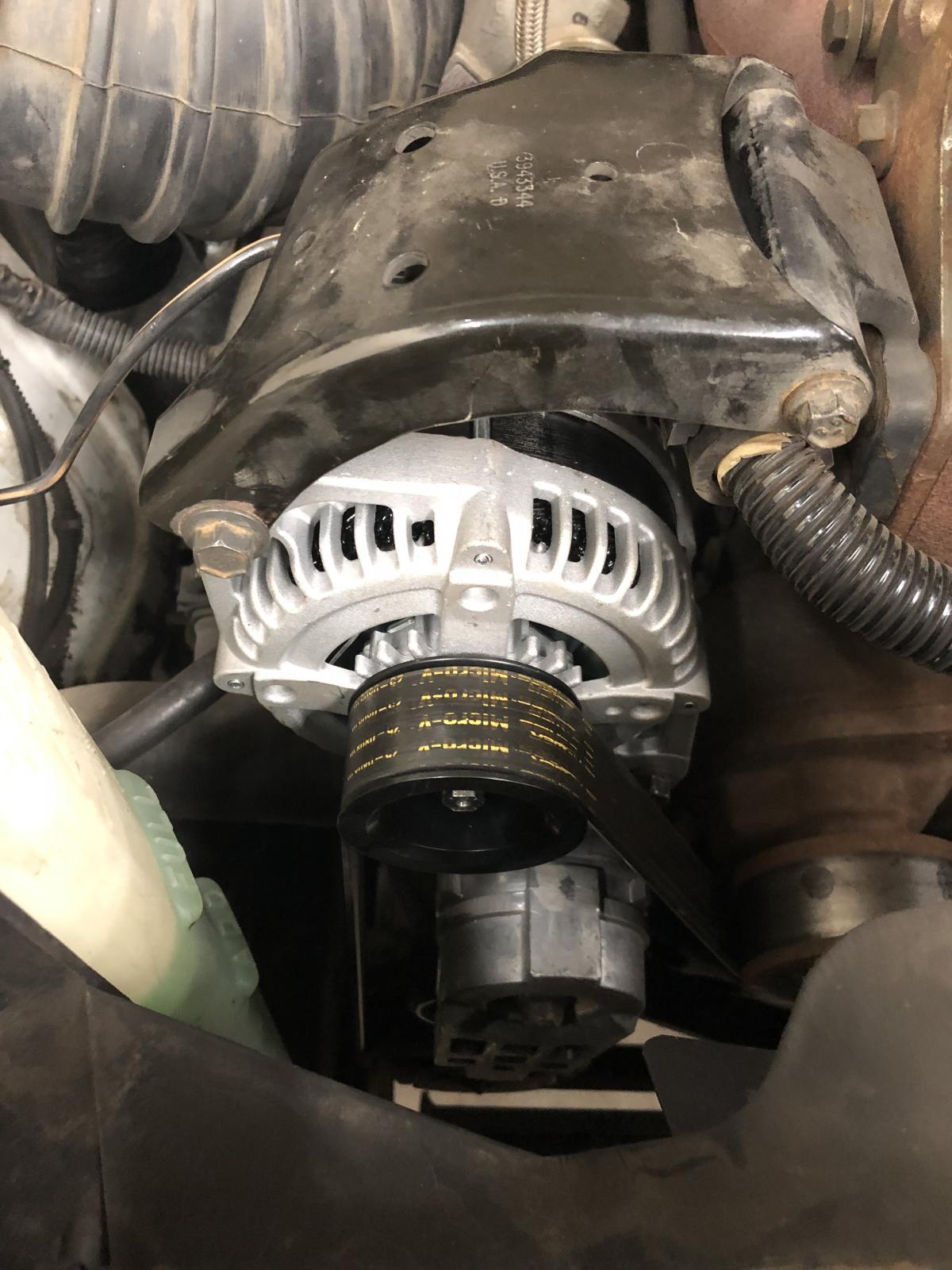- Replies 69
- Views 17.3k
- Created
- Last Reply
Top Posters In This Topic
-
KATOOM 15 posts
-
Bafazane 8 posts
-
Dieselfuture 6 posts
-
dripley 5 posts
Most Popular Posts
-
The cable is actually black with a tan tracer and comes from the splice on the drivers side of the motor. The is the ECM ground plus about 4 others. WT's ground mod is the way to go. It shortens all t
-
Technically it affects every electrical component in the truck. The most vital parts are the ones it affects most though. (ECM, PCM, PSG)
-
Any DC powered electrical device is not going to like being blasted by AC power. Since our entire electrical system is DC 12v everything will get damaged given enough time.









I try to be proactive towards the maintenance of my truck rather than reactive.....
Knowing that the OEM Bosch alternator had almost 120k miles on it, I felt that not only was it probably going to give me DC troubles in the near future but I was also sure that I was most likely experiencing some AC issues as well, especially during the cold morning and hot summer weather.
Why I say that....? I've tested my AC voltage before during the summer and it was within "spec", but still I thought the readings were higher than I'd like. So I recently tested again before installing the Nations unit just to confirm and what I got was about .044 during idle. Yes thats acceptable but also understanding that its 35* outside and the engines warm enough that the grids are not cycling, I felt that there was nowhere for the AC readings to go but up. Meaning, as the weather gets warmer and/or the alternator is powering more accessories, the AC voltage reading will only increase.
Alternators will produce the least amount of AC at idle with little to no electronics running. But ramp the throttle up to around 2000 - 2500 RPM, turning on every electrical component and the readings will always increase as the diodes work at converting. I saw that the last time I tested it in the summer so I felt I'm justified in replacing before problems arise. Plus I noticed a considerable amount of red brush dust on the tensioner pulley (seen in the picture) which reassured me that it was getting old.
So I've decided to replace it. Exploring my options, they are as usual..... To either rebuild my current one, get an over the counter "lifetime warranty" parts store unit and hope for the best, or look for one of the few high dollar units available out there in the aftermarket world. Well given money is always a variable, I chose to go with the Nations unit I've heard good things about. Not only are they priced what I consider to be reasonable for what you get but they're also American made. Plus if I have trouble, I'd rather deal with Nations than deal with either Autozone, NAPA, O'Reilly, etc... and risk delicate electronics on this truck. Yes, I could have had it rebuilt but I'd still have an alternator that may or may not generate more AC than I'd like because of the windings and diode count, but I'm sure I'd probably have battle with the small shop explaining what I want and why, since most places are more concerned with DC output rather than what the AC voltage readings are.
This is the one I opted for. 180 amp, hairpin wound, 12 diodes, and uses the stock pulled size. http://www.nationsstarteralternator.com/180-Amp-HP-High-Output-Alternator-for-2000-Dodge-p/13874-180-hp.htm
Just to be clear.....what I was experiencing with the OEM alternator was the norm and had been this way for years. That said, typically the volt gauge in the cold mornings would do as described:
Turn key ON, gauge drops to the lower portion of the "normal" range.
Start engine when WTS light turns off.
Gauge immediately drops back down to the lower portion of normal as the grid cycles on again.
Gauge starts to climb rapidly as the grid cycles off.
Seconds later the grid cycles on again and the gauge dips down to the lower portion of normal.
This back and forth takes places for a few minutes depending on the ambient temperature. And when it does, the engine clearly lets me know that the grids are cycling by either making the tell-tale noise of loading down from the alternator drag, and/or I can get a slight momentary idle lope only to immediately regain regular idle.
The lights dim considerably as well and the volt gauge generally reaches just a tick over 14 volts when its completed the event or I drive off.
Well after the install of the Nations unit this is what takes place:
Turn key ON, gauge drops to the lower portion of the "normal" range.
Start engine when WTS light turns off.
Gauge does NOT drop back down to the lower portion of normal as the grid cycles on again, but rather remains up around 14 volts.
Gauge moves a tad higher than 14 volts as the grid cycles off.
Seconds later the grid cycles on again and the gauge drops no lower than 14 volts.
As before, this back and forth takes places for a few minutes depending on the ambient temperature. But this time the engine does NOT react the same but rather hardly lets me know that the grids are cycling. There is no tell-tale noise of loading down from the alternator drag and I seemingly had no slight momentary lope during that moment either.
I cant say about the lighting at this point because I havent driven it during the night since the new alternator was installed. But I'm going to guess that they will not dim nearly as much given that the alternator appears to be cranking out more amperage during idle while creating less load on the engine. I also tested the AC voltage as soon as I installed the Nations unit, while during the same cold weather, and saw about .020. I'll be testing it some more as the weather warms too.
Lastly, I would say that of the few times I've driven it since the install the engine has slightly better manners during the cold weather. This only further supports the understanding that these trucks are VERY susceptible to electronic anomalies and the alternators are absolutely something to pay attention to.
Edited by KATOOM